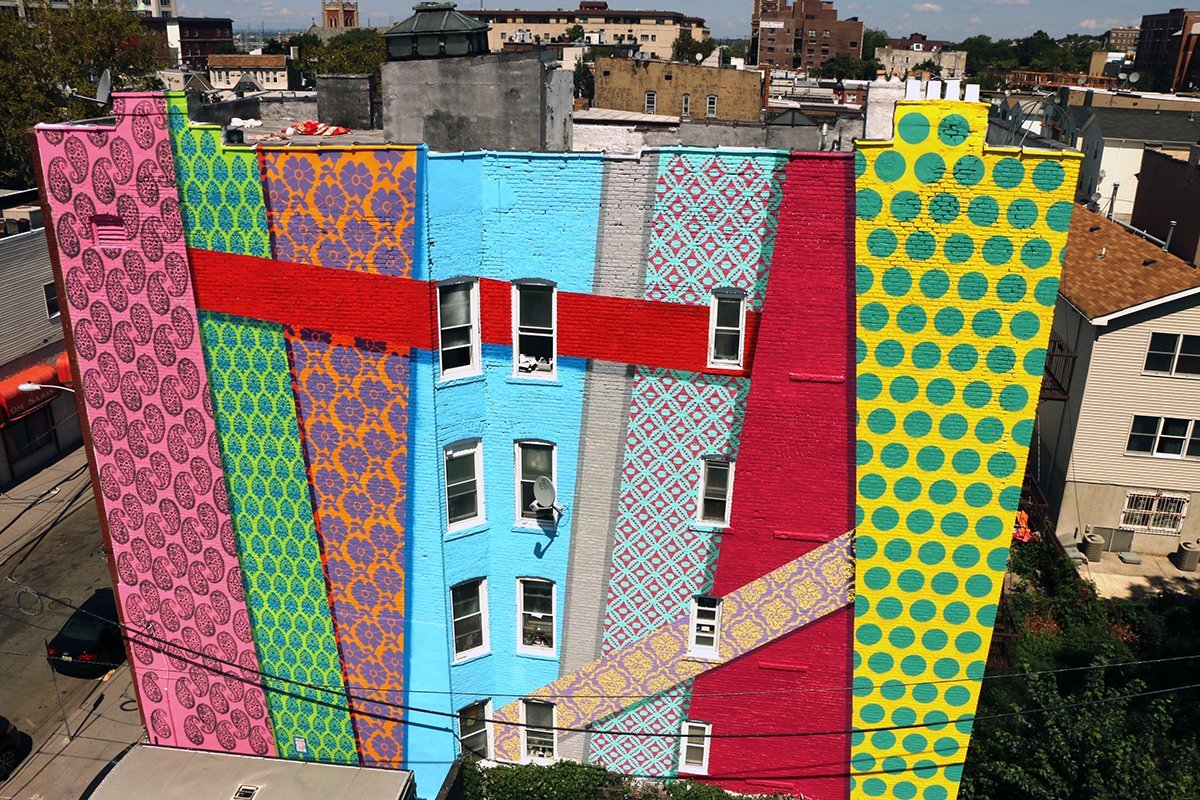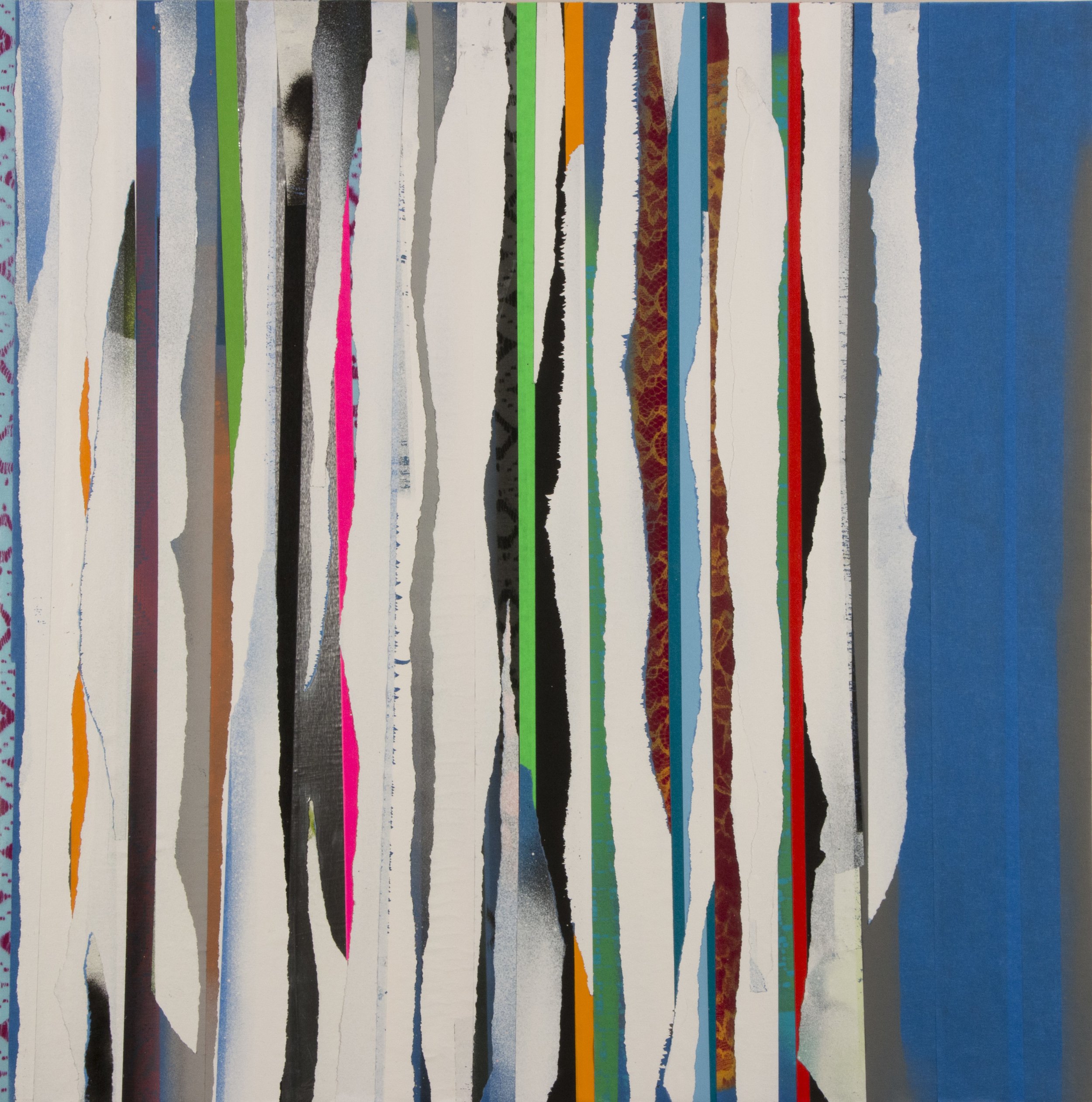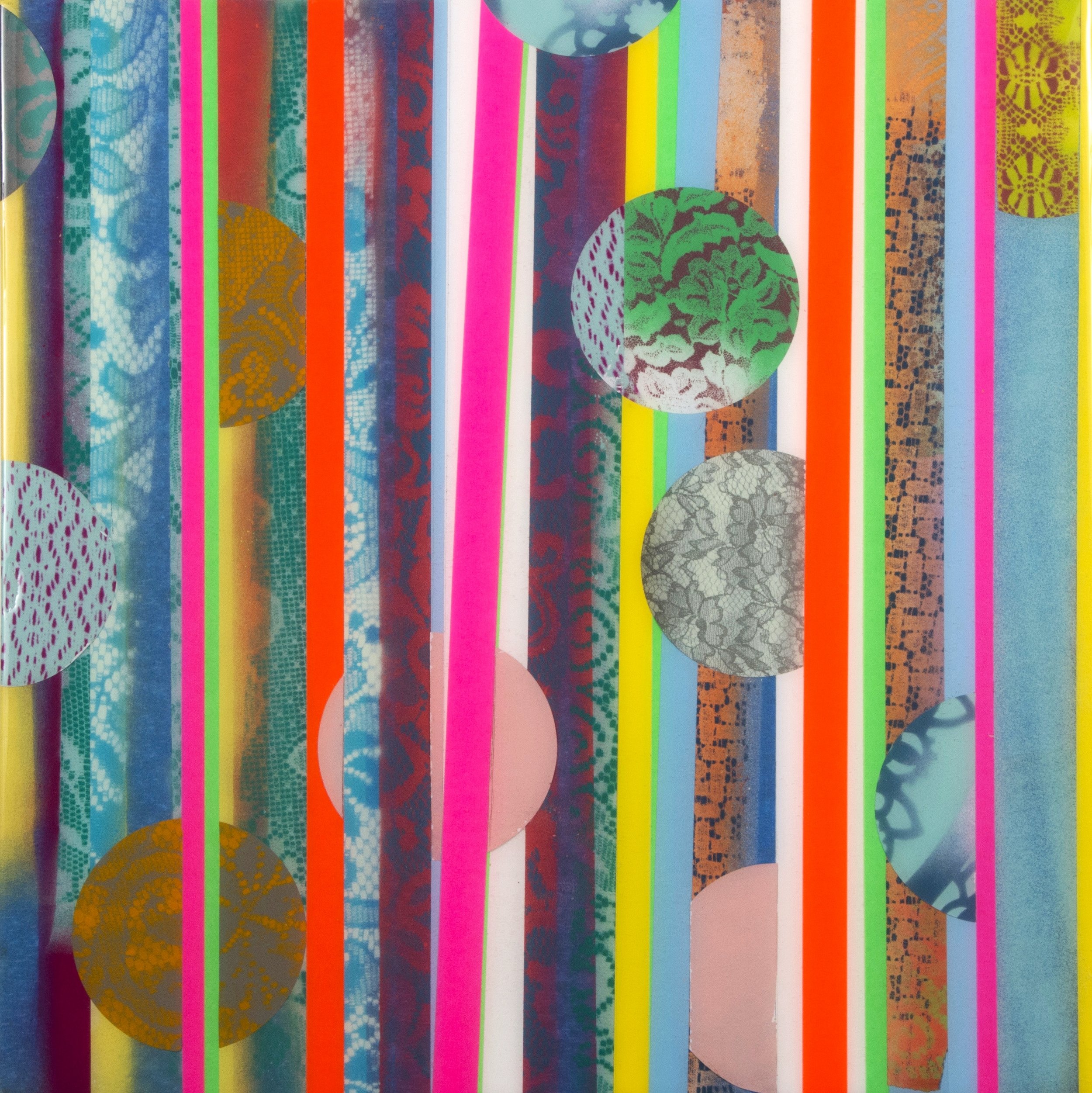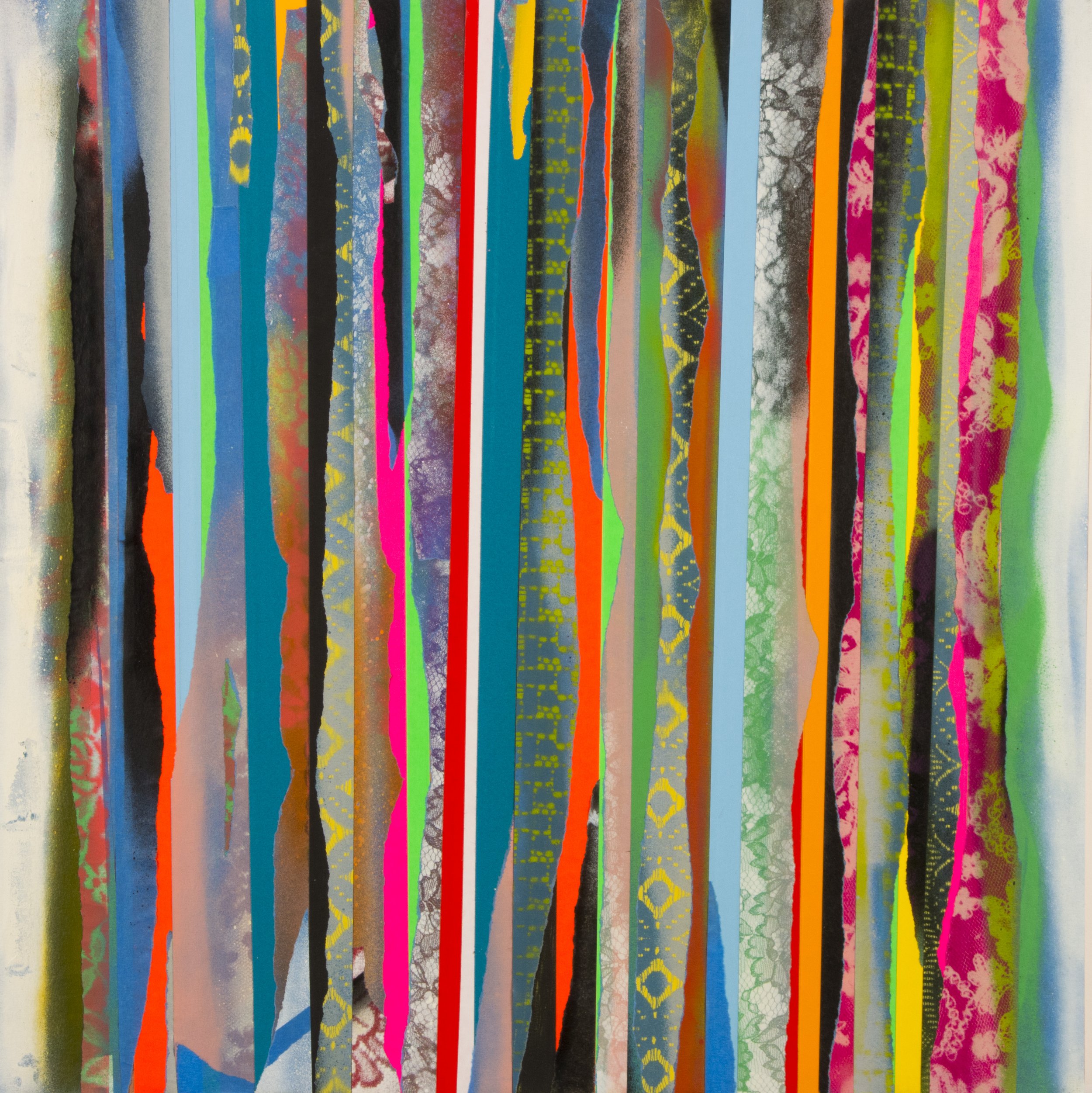JMikal Davis Bridges the Gap Between Mural Painting and Folk-Art Tradition
While he is a maximalist in his work, he remains sustainable in his practice by embracing upcycling into his artworks.
“The Red Ghosts of European Time.” Courtesy of PR for Artists
Inspired by his upbringing in the South, JMikal Davis (also known as Hellbent) combines quilt making and folk art tradition to paint incredible geometric murals across city streets. A now New York City-based artist, his work explores community by incorporating traditions. Davis’s colorful geometric murals and paintings transform the language of the street into intricate explorations of community. In Little India, New Jersey, Davis utilized traditional Indian block printing on a mural.
While he is a maximalist in his work, he remains sustainable in his practice by embracing upcycling into his artworks. 1202 MAGAZINE sat with Davis to discuss his inspirations, the communities he represents, and his sustainable art practices.
When asked about the inspiration behind quilt making and folk traditions, Davis tells us that the idea came to him accidentally while he was experimenting with drawing on wood panels using a Dremel. He says, “I would paint panels black and then carve into them, and the contrast with raw wood and dark surface would be like a line drawing. I had been playing around with cutting my own stencils, which was labor-intensive, and by accident, I had some lace in the studio and had sprayed through it as I was doing something else. I threw the image from the lace to the paper underneath, and it was a lightbulb moment. I can use this as background! The lace is premade, and I don’t have to kill myself cutting stencils.”


“Hold Back the Night” and “Jaan Pehechaan Ho.” Courtesy of PR for Artists
As he began to use these carvings as different-colored backgrounds, he realized that they resembled his aunt’s quilts. When asked to participate in Ad Hoc Gallery’s Welling Court Mural festival, he painted a quilt pattern and received a lot of positive reception for it. He then realized that abstraction was very underrepresented on the street, so he leaned into it and tied folk tradition into his art to stray away from conventional street-based work.
Davis’s upbringing had a significant impact on his art, as his mother exposed him to art at a very young age. He also inherited his father’s skills as an engineer, which helped him construct spaces and develop his technical drawing skills. His grandparents were also heavily involved in the arts; his grandmother painted on porcelain, and his grandfather was a woodworker with a good hand at drawing.
A major factor in Davis’s artistry developed in his childhood when he moved to Portland. “At the time, there was a city campaign to expose yourself to art, so we went to many museums,” he says. “At the same time, I was taking art classes after school. It was just the basics of learning different techniques and materials, but my teacher was great and I really enjoyed it.” He then moved from Oregon to Atlanta, Georgia, and the culture shock of the South introduced him to various art forms, including folk art. He was drawn to folk art and the idea that anyone could create art, regardless of their skill level, so he began creating work in public.
“Breeze Block,” “Synarchy,” and “You Can’t Get There From Here.” Courtesy of PR for Artists
Davis represents communities in the murals he paints. If he’s asked to paint a mural in a new area, he will research the history of that area and the various groups of people that comprise the community, drawing inspiration from their artistic and textile traditions. He says, “Typically, textiles work into my art as they are usually some form of repeating patterns. I’ll also look at different colorways that will inform the project. There are some different things that might take place in the process of sketching a mural idea.”
For a project in Little India, Jersey City, New Jersey, he came across food trucks that are often hand-painted and commonly found in major cities in India. He loved the loud and vibrant colors they used, which encouraged his own designs. “Considering the community that will be living with the art is the least I can do,” Davis says. “It engages them on another level, and while it might not be totally obvious to them, I am hoping at least subconsciously they are picking up on it.”
In creating all his art by embracing tradition, Davis is also mindful of sustainability practices, reusing art supplies and scraps whenever possible before discarding them. Early in his practice, he used lace as the basis for his stencils, accumulating numerous bags of lace with various stains and residue from paint that had been sprayed through them. He upcycles this lace and is now using it in his newest body of work by stacking different substrates on top of one another to create layers. He also reuses drop cloths from murals as canvases for some of these artworks. Davis truly believes that scraps tend to create something different and beautiful.



“Demo 102,” “Demo 103,” and “Demo 105.” Courtesy of PR for Artists
As our conversation concluded, Davis says there are several brands he dreams of working with, including a partnership with a publishing company to create a book series featuring his art. “Like if Penguin was re-releasing the collection of Phillip K. Dick novels and each title had a different one of my paintings.” Another dream would be to create the album cover for a band he’s really into.
So far, Davis has worked with Ralph Lauren and Coach, among others, and has had great experiences with all of them. Moving forward, he wants his art to continue evolving while also revisiting things he had abandoned years ago. “Being an artist is about freedom and that there are no rules to follow.” He is currently compiling his works into a book, so stay tuned and keep an eye out for his upcoming projects.




